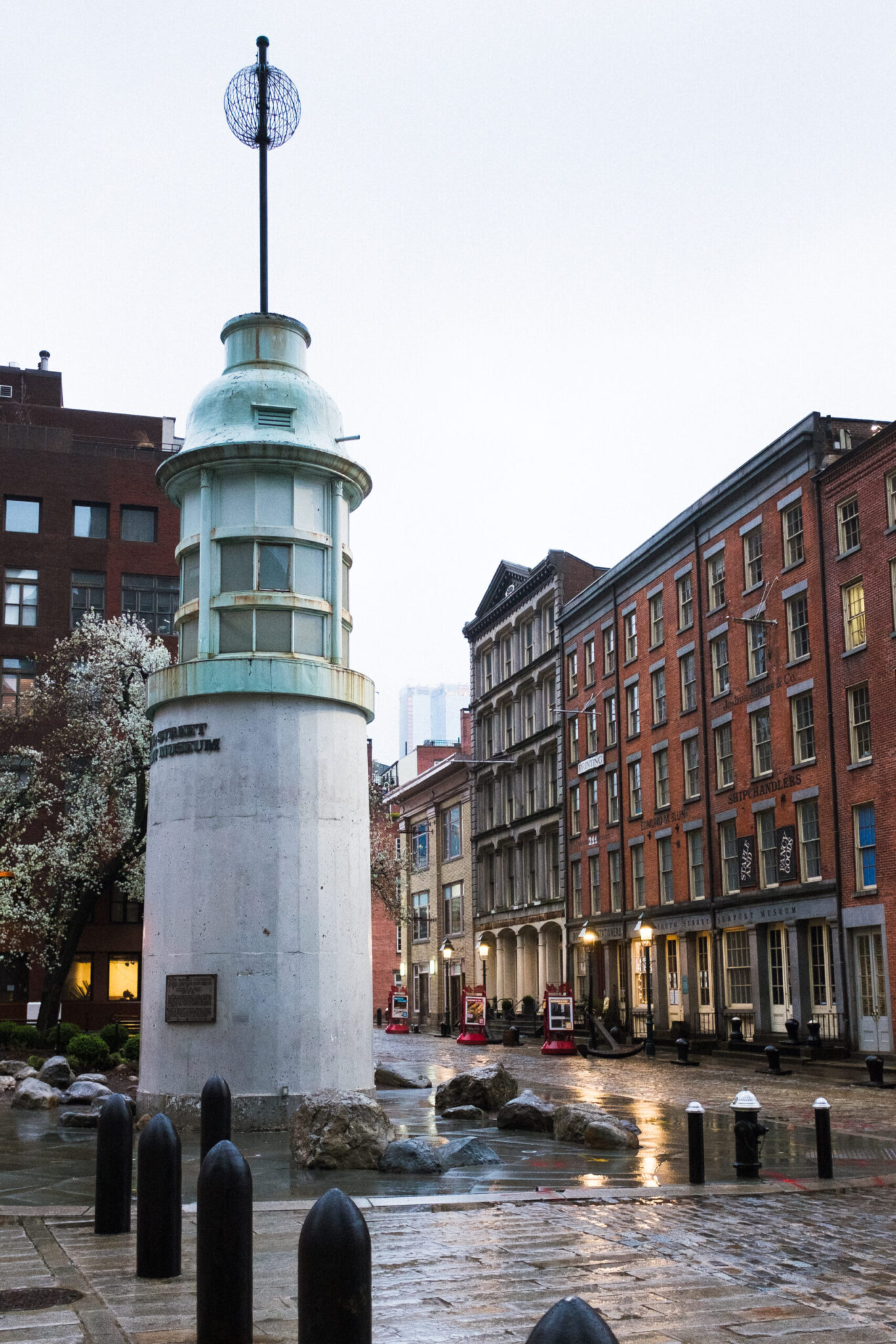National Maritime Historical Society Raises Awareness of Seaport Museum
The National Maritime Historical Society (NMHS) just released a new paper detailing the role of the South Street Seaport Museum in supporting the South Street Seaport Historic District.
NMHS raises awareness of our maritime heritage and the role seafaring has played in shaping civilization. Hundreds of thousands of readers have discovered in the pages of Sea History magazine a treasure-trove of tales, past and present, that captivate, inspire, and educate us about the vital role of the sea—and those who have sailed upon it.
Here’s an excerpt from their study – the full paper can be found here.
There are few institutions in the world that capture the importance of maritime history like New York’s South Street Seaport Museum. The Seaport is the birthplace of New York and the beginning of its journey as the most important city in the world. America owes its place in the world in no small part to the history that occurred there and many of our country’s economic successes and developments sprang from the trade and innovation that happened there.
Allowing the closure of the Seaport Museum would be giving consent to the erasure of our nation’s historical beginnings and growth. The 18th and 19th century buildings of the South Street Seaport Historic District exist today because the South Street Seaport Museum exists. If the Museum is forced to close, the fate of these structures will be unclear and the Historic District as we know it could disintegrate with many structures falling vacant and into disrepair or being converted into anonymous retail space due to neglect.
“The buildings of the Seaport span a period of almost 200 years and are representative of several different styles of mercantile architecture, including Georgian, Federal, and Greek Revival, as well as the later Italianate and Romanesque Revival styles. Early stores and warehouses were designed by builders often unknown, while later 19th-century buildings were often the product of prominent New York City architects such as Stephen D. Hatch, George B. Post, and Richard Morris Hunt” – Martina Caruso, Director of Museum Collections.
“Today, many of the original structures are a combination of several architectural styles as they were substantially modified at a later date. The Museum’s collections and archival materials document the stories of many of these buildings, their styles, businesses and occupants, their changes in use, historical happenings, as well as their restoration, or losses” – Martina Caruso, Director of Museum Collections. Most recognize the Seaport Museum for its award-winning, meticulously restored, and carefully curated fleet of historic vessels, three of which operate as artifacts-in-action carrying students and the public: the 1885 schooner Pioneer, the 1907 lightship Ambrose, the 1930 wooden tug W.O. Decker, the 1893 fishing schooner Lettie G. Howard, and the 1885 cargo sailing ship Wavertree. These are the Museum’s most visible treasures and are costly and arduous to maintain. But it’s often overlooked campus of historic buildings throughout the seaport district is equally as valuable and challenging to upkeep.

Together we can save the South Street Seaport Museum!
The pandemic has put the Museum at great risk of closing for good. We’re asking all those who love New York to step forward and join the die-hards who have kept the Museum alive through a myriad of challenges. Join the Our City, Our Seaport: Campaign to Save the Seaport Museum.

